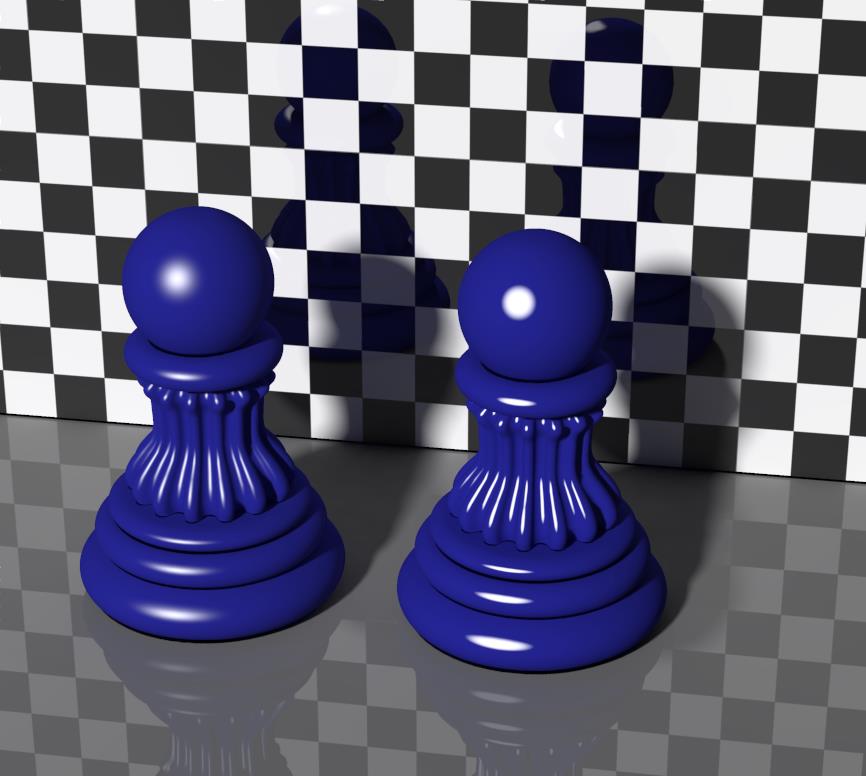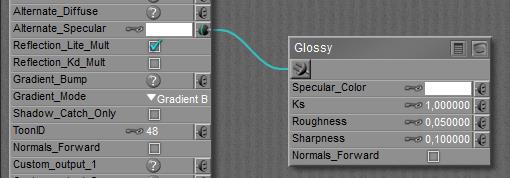Nodes are the essential building blocks in the Advanced interface to the Poser Material Room. They are the graphical representation of mathematical function calls, that is: calculation procedures which turn parameters (inputs) to a result (output).
Intermediate
All nodes in the Specular group respond to specular light, which refers to specular light from direct (point- spot- infinite) sources only. The regular ‘specular’ node itself, either separate or embedded in the PoserSurface definition directly is fast to calculate, but falls short for a neat illusion of about any real stuff except hard plastic.
This is why Poser offers alternatives, like Blinn, or Anisotropic for microscopically grooved surfaces. In this series, Glossy can be considered as somewhat outdated, and available for compatibility reasons mainly. Glossy was introduced as an improvement over the classic Phong specularity, and added the suggestion that light sources have a physical size (while in Poser, they have not). So Glossy produces quite intense midsections in the round highlights; nice for point- and spotlights but incorrect for infinite lights unless these represent a sun.

Above: the left pawn shows regular specular, right pawn shows glossy, both at their default settings.
Glossy makes sharp highlights with eventually a softening edge. In the image above the highlights are about equal size. The left pawn is regular specular, color white, value 1.0 and highlight size 0.05. The right pawn has the same color, the Ks value matches Specular Value and Roughness matches Highlight size, while Normals Forward matches the same option in PoserSurface.

This leaves Sharpness as an extra parameter. It makes the width of the blur at the edges of the highlight. High values – up to 1.0 – produce sharp edges but frankly, values over 0.1 start to make quite an unnatural impression.